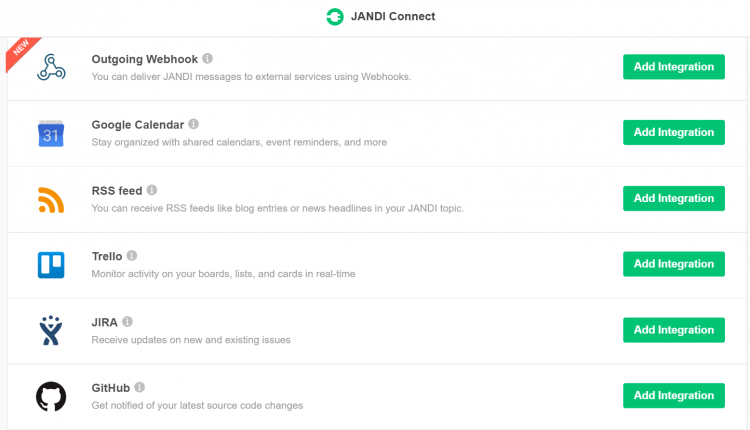Remote Employees: Tools for Collaboration
Employees in an office or working remotely need collaboration tools. Communication is the cornerstone of any good business.
Amid the recent outbreak of coronavirus (COVID-19), many companies have been forced to implement procedures for employees to work remotely.
Implementing team collaboration software, such as JANDI, can assist companies and employees in the transition from working in an office to working from home.
Business and Economic Impact
The spread and unknown threats related to coronavirus are causing companies across the globe to reevaluate their current remote working practices.
This outbreak has opened the eyes for many companies to realize that they were not properly prepared. Businesses across the globe are scrambling to implement collaboration tools.
Even as the US stock market saw major declines the last week of February, publicly traded companies offering collaboration software and video conferencing saw spikes in their prices.
Canceled Events
Facebook has modified the format of the F8 2020 developer’s conference to be all online. The social media company has completely canceled its Global Marketing Summit.

The Louvre Art Museum in Paris closed as a result of 100 confirmed coronavirus cases in France.
The Berkshire Hathaway shareholder convention typically draws an attendance of 40,000 to Omaha, Neb each May, with roughly 5,000 attendees coming from China. Warren Buffet is not expected to cancel the event but is anticipating a reduction in attendance. “If the current travel restrictions remain in place, we won’t have visitors from China.”
International Travel
Major corporations are restricting employee travel, specifically international travel, as a proactive measure to reduce the spread of the virus. Twitter, Apple, Google, Microsoft, and Nestlé have implemented such measures.

Photo by Gerrie van der Walt on Unsplash
Staying Home
Across Europe and Asia, employees are currently encouraged to stay home to prevent the spread of COVID-19. Microsoft, Hitachi, and Chevron have implemented policies for employees to work remotely.
Amazon and Nestlé employees have been asked to work from home for two weeks (the suspected incubation period) after travel to affected areas.
Employee Productivity
Productivity, as a result of the outbreak, is completely based on whether or not the company has collaboration tools in place.
Tech companies have been early adopters of remote employees. Developers have historically gathered for planning sessions and then each employee is sent off to work independently.
One US-based Nestlé employee states that the travel restrictions are challenging, but collaboration is still possible.
“When a hiccup occurs in the production process in Europe, we work through the problem through video conference. Instead of being on-site to review the sample, products are rush shipped to me.”
The biggest hurdle faced by companies new to remote working is how to monitor employee efficiency and output. Harvard Business Review reports that remote employees are more productive. A study of the U.S. Patent & Trade Office showed an increase of productivity by 4.4% for employees working from home. Additionally, and of utmost importance, the quality of work did not diminish.
Yet some employers have doubts about productivity. Many companies in China are requiring employees to provide selfies or participate in video conferencing to verify that they are at home.
Prepare for Remote Work
Prior to the outbreak of the Coronavirus, some employees around the world have been embracing the flexibility to remotely work from home for years.

Photo by Arif Riyanto on Unsplash
North American remote employees of SAP have been 13.5% more productive than their counterparts in the office. Other studies have shown that online collaboration tools have increased productivity by 20-30%.
Why? Employees with the option to remotely work are happier, less distracted, and feel more valued.
Work-Life Balance
Finland is the global leader for remote work. The Working Hours Act allows the majority of full-time employees to decide when and where they work half of the time.
Tarja Kröger, a senior civil servant and advisor at Finland’s Ministry of Employment and the Economy, states that employees are still expected to work 40 hours a week. Kröger credits this new work-life balance with the wide availability of Wi-Fi and cloud-based collaboration tools.
Work-life balance for a working parent may be the option to leave the office early to pick up kids from school and then work remotely while the kids complete homework.
Some remote employees find work-life balance by working at a summer cottage away from the hustle and bustle of the city.
Management should set key expectations for employees working remotely. They should define working hours and expectations for response times.
Physical Interaction
Yahoo and IBM have removed remote working policies. The basis for their decision was that employees need to physically be together to increase creativity and build relationships.
“Water cooler” chats, once thought of as idle gossip and a waste of company time, may actually be beneficial. Employees would have the opportunity to casually interact with teammates in the office showed an increase of 10% productivity.
Nonetheless, remote working is on the rise and can be beneficial.
To counteract the reduction of interaction, many companies institute set days that employees must all report to the office. Video conferencing also reduces the feeling of isolation.
Collaboration Tools
Before implementing remote work, ensure that your business has the proper tools in place for an effective roll-out.
- Does your business currently have a collaboration platform?
- How do employees communicate in real-time?
- Are managers and employees able to easily find relevant information?
- What features are needed for team collaboration software?
Organized Chat Rooms
Employees need to talk to each other. In real-time. It is an essential function of team-work .
Numerous software solutions offer chat rooms or channels, but the functionality is evidently lacking.
WhatsApp, a Facebook company, was not designed for business use, but simply as a personal communication app. Participants are added to a group chat with a subject. Chats cannot be filtered by business or personal.
Shorooq Partners switched from WhatsApp to JANDI due to the superior group chat functionality.
In addition to the structure of the JANDI chat rooms, founding partner of Shorooq Partners, Shane Shin, likes the history functionality. “WhatsApp allows you to comment, but new joiners do not have access to the history in the group chat”.
True collaboration is possible when all involved parties have the same knowledge base. Organized, historical chat rooms make this possible.
Look for chat rooms that offer translation services for teams that speak different languages.
Messaging
Simplify communications by using a single collaboration platform. Eliminate emails for internal communication and replace them with messaging. A single messaging tool provides quick feedback and reduces email and phone calls.
Added bonus: JANDI offers a read/unread feature for all messages.
Nam Sung Marine found that utilizing a single “in-house business messenger can provide fast feedback and increase efficiency in business operations.”
Share Documentation
Imagine you are in the middle of a group chat and someone requests to view a file. Historically, users would exit the chat to share the documentation via email.
JANDI allows files to be shared directly in group chats. Added perk, the files can be viewed on the computer and mobile devices.
Searching for documentation is just as vital as the ability to share it. JANDI makes it easy to search by keyword, chat room, file type, or date.
Shared documentation does not expire in the JANDI cloud and is always accessible.
When sharing documentation isn’t enough, utilize screen capture and sharing of screens. Screen sharing is advantageous for problem solving and the training of new employees.
Integration
Employees in the office or working remotely are inundated with software. A tab dedicated to communication platforms. Another tab to check email. Yet another tab to review daily reminders.
Users may have a browser dedicated solely to bug tracking and project management.
Collaboration is not just for people, but software applications as well. Integration is key.

Integrate G Suite to view shared calendars, event reminders, and organize email inboxes.
Send JANDI messages to other services using Webhooks.
Keep track of industry blogs with RSS feeds.
Monitor Trello boards, cards, and lists.
Receive notifications of source code changes from GitHub or BitBucket.
Video Conferencing
As the world is currently experiencing travel restrictions, video conferencing is filling a void.
Not only is video conferencing economical compared to travel, it provides the same collaborative benefits one expects from a conventional face to face meeting.
? Check out: 3 Essential Business Tools For Working From Home
Chat rooms are quick and easy, but the written word does not always express the same tone and urgency as when communicating verbally. Video conferencing is a better solution to disseminate important information.
Video conferencing can bring a remote team together to deepen relationships, trust, and drive results.
Accessibility
Remote employees are not always in front of their computer at the moment that collaboration needs to occur.
The best collaboration tools are available as desktop and mobile options. Collaboration apps are extremely valuable for employees that frequently travel or do not have consistent access to a computer.
In 2015, online collaboration tools were used by 83% of employees in the United States, Canada, and the United Kingdom. Shockingly, 85% of employees with access to collaborative management tools classify themselves as “happy”.
As productively and employee satisfaction increases with the use of collaboration tools, it is unlikely that remote work will be ending.
Moreover, coronavirus isn’t going away anytime soon. The British government warns that one fifth of employees could be absent from the office during the peak of the outbreak.
Remote work and collaboration tools may just be what the world needs to keep the economy and businesses running.
A Message from Toss Lab, Inc.
We are offering Free JANDI Enterprise Service to all companies required to work from home due to coronavirus ?.
? Please fill in this form: http://bit.ly/JANDI-Enterprise




